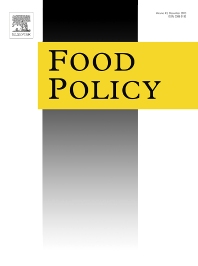Last updated on December 15, 2013
I began a three-year term as associate editor over at Food Policy at the beginning of November, which means that I handle submissions in my areas of expertise, deciding which manuscripts get reviewed and which ones get desk rejected, selecting reviewers for those manuscripts that do get reviewed, and so on.
Even after a little over month, serving as associate editor at Food Policy has given me new insights into the editorial process, which I might eventually blog about. For now, however, I simply wanted to feature a few articles from the latest issue of the journal. There is nothing special about those articles beyond the fact that I thought they would be of interest to readers of this blog.
Food aid and household food security in a conflict situation: Empirical evidence from Northern Uganda, by Hamidu Tusiime et al.
Highlights:
- We test targeting and impact of food aid in a conflict zone (Northern Uganda).
- Targeting was effective and according to programme objectives.
- Propensity score matching indicates food aid reduced food expenditures.
- Food aid increased meals consumed for male headed households.
- Food aid avoided distress destocking of low value assets for male headed households.
Impact of metal silos on households’ maize storage, storage losses and food security: An application of a propensity score matching, by Zachary Gitonga et al.
Highlights:
- Metal silos are effective against storage pests, improve household welfare and food security.
- Adopters waited to sell their maize at better prices and stored longer than non-adopters.
- Adopters lost little grain and on average saved between US$ 102–130 worth of grain.
- Adopters stored maize for two months more and were more food secure than nonadopters.
Status of development, regulation and adoption of GM agriculture in Africa: Views and positions of stakeholder groups, by Ademola Adenla et al.
Highlights:
- Development and regulation of GM crops based on the views of 305 stakeholders in six African countries.
- Challenges in development of effective biosafety regulatory frameworks.
- Adoption of GM crops based on Fiber–Feed–Food (F3) approach.
How should nutrition be positioned in the post-2015 agenda?, by Lawrence Haddad
Highlights:
- Commitment to nutrition must be locked into the next set of development goals.
- Nutrition thinking has much to offer development goal designs.
- A good post-2015 outcome for nutrition is a strong set of nutrition indicators in various goals.
